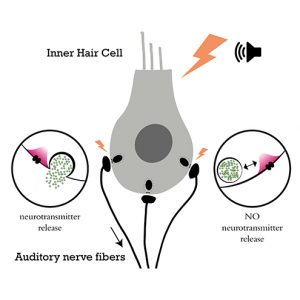10.02.2021
Authors Sertel SM, von Elling-Tammen MS, Rizzoli SO Journal Journal of Neuroscience Citation J Neurosci. 2021 Feb 10;41(6):1157-1173. Abstract The activity and the metabolism of the brain change rhythmically during the day/night cycle. Such rhythmicity is also observed in cultured neurons from the suprachiasmatic nucleus, which is a critical center
09.02.2021
“Heart patch” made from stem cells enters world’s first clinical trial
First application in humans: The BioVAT-HF-DZHK20 study intends to investigate the use of heart muscle tissue derived from stem cells for treatment of patients with severe heart failure. The incorporation of heart muscle tissue cultivated in the laboratory is intended to sustainably improve the pumping function of diseased hearts. The
08.02.2021
Transcription activation depends on the length of the RNA polymerase II C-terminal domain
Authors Sawicka A, Villamil G, Lidschreiber M, Darzacq X, Dugast-Darzacq C, Schwalb B, Cramer P Journal EMBO Journal Citation EMBO J. 2021 Feb 8:e107015. Abstract Eukaryotic RNA polymerase II (Pol II) contains a tail-like, intrinsically disordered carboxy-terminal domain (CTD) comprised of heptad-repeats, that functions in coordination of the transcription cycle
08.02.2021
Post-transcriptional regulation by the exosome complex is required for cell survival and forebrain development via repression of P53 signaling
Authors Ulmke PA, Xie Y, Sokpor G, Pham L, Shomroni O, Berulava T, Rosenbusch J, Basu U, Fischer A, Nguyen HP, Staiger JF, Tuoc T Journal Development Citation Development. 2021 Feb 8;148(3):dev188276. Abstract Fine-tuned gene expression is crucial for neurodevelopment. The gene expression program is tightly controlled at different levels,
05.02.2021
Synaptic diversity broadens the range of sound we can hear
Hearing occurs when sensory hair cells in the inner ear convert sound into neural signals transmitted to the brain. The sensory hair cells have about a dozen communication points with the auditory nerve fibers, called synapses. Scientists from the Institute for Auditory Neuroscience at the University Medical Center Göttingen discovered
05.02.2021
Synaptic diversity broadens the range of sound we can hear
Hearing occurs when sensory hair cells in the inner ear convert sound into neural signals transmitted to the brain. The sensory hair cells have about a dozen communication points with the auditory nerve fibers, called synapses. Scientists from the Institute for Auditory Neuroscience at the University Medical Center Göttingen discovered
05.02.2021
Two mechanisms drive pronuclear migration in mouse zygotes
Authors Scheffler K, Uraji J, Jentoft I, Cavazza T, Mönnich E, Mogessie B, Schuh M Journal Nature Communications Citation Nat Commun 12, 841 (2021). Abstract A new life begins with the unification of the maternal and paternal chromosomes upon fertilization. The parental chromosomes first become enclosed in two separate pronuclei
05.02.2021
Awarded doctorate in neuroscientific hearing research
Dr. Alexander Dieter, a young neuroscientist and first author of the MBExC publication “μLED‐based optical cochlear implants for spectrally selective activation of the auditory nerve” (published in summer 2020 in the EMBO Molecular Medicine Journal), has been awarded with the doctoral thesis award 2021 of the Studienstiftung des Deutschen Volkes.
04.02.2021
Sulthiame impairs mitochondrial function in vitro and may trigger onset of visual loss in Leber hereditary optic neuropathy
Authors Reinert MC, Pacheu-Grau D, Catarino CB, Klopstock T, Ohlenbusch A, Schittkowski M, Wilichowski E, Rehling P, Brockmann K Journal Orphanet Journal of Rare Diseases Citation Orphanet J Rare Dis. 2021 Feb 4;16(1):64. Abstract Background: Leber hereditary optic neuropathy (LHON) is the most common mitochondrial disorder and characterized by acute
04.02.2021
Ribosome-bound Get4/5 facilitates the capture of tail-anchored proteins by Sgt2 in yeast
Authors Zhang Y, De Laurentiis E, Bohnsack KE, Wahlig M, Ranjan N, Gruseck S, Hackert P, Wölfle T, Rodnina MV, Schwappach B, Rospert S. Journal Nature Communications Citation Nat Commun. 2021 Feb 4;12(1):782. Abstract The guided entry of tail-anchored proteins (GET) pathway assists in the posttranslational delivery of tail-anchored proteins,





